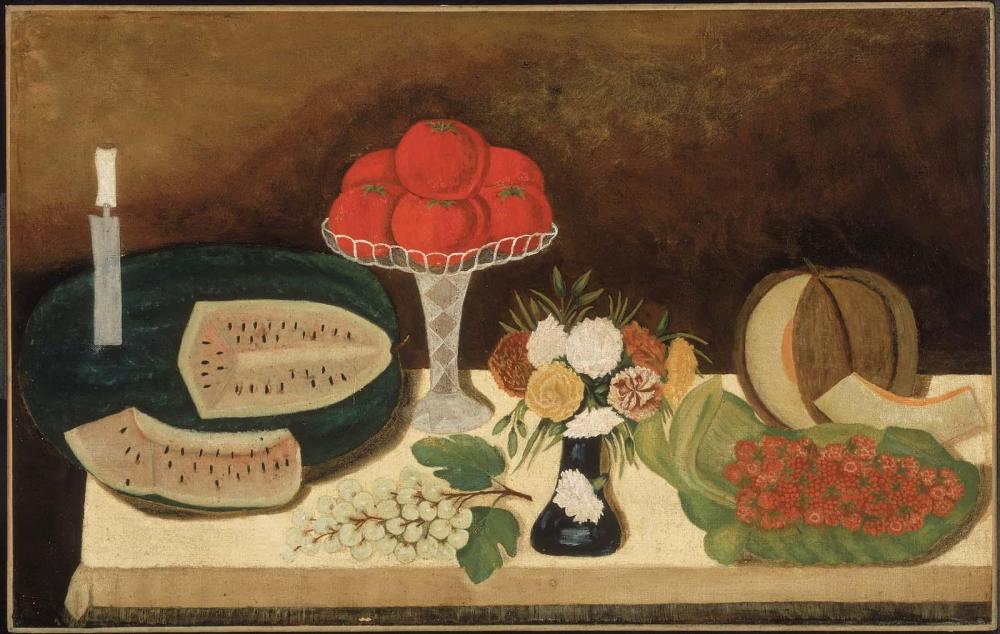Advanced Search 

Tomatoes, Fruit, and Flowers
about 1860
Medium/Technique
Oil on canvas
Dimensions
50.8 x 80.01 cm (20 x 31 1/2 in.)
Credit Line
Gift of Martha C. Karolik for the M. and M. Karolik Collection of American Paintings, 1815–1865
Accession Number47.1265
NOT ON VIEW
CollectionsAmericas
ClassificationsPaintings
Interest in still-life paintings burgeoned in mid-nineteenth-century America. Large images of varied objects, like this one, were popular for dining rooms, suggesting abundance, well-being, and hospitality. The compote piled high with fruit, bone-handled knife, melons, grapes with their leaves, and flowers are also found in the work of contemporary academic still-life painters such as Severin Roesen and John F. Francis. Their objects, as here, are arranged against a monochrome background modulated with muted light. Unlike academic still lifes, however, this painting seems more additive than integrated. The emphasis is less on texture and atmosphere - a sense of the whole - than on discrete shapes and emphatic contours.
Although most of the objects in this image are commonplace, paintings including tomatoes are rare, possibly because many people neither liked nor trusted this fruit. In 1852, for example, a Harvard-educated doctor claimed that tomatoes caused teeth to become so loose they could be easily removed with the fingers.
This text was adapted from Gerald W. R. Ward, et al, "American Folk" (Boston, MFA Publications, 2001).
Although most of the objects in this image are commonplace, paintings including tomatoes are rare, possibly because many people neither liked nor trusted this fruit. In 1852, for example, a Harvard-educated doctor claimed that tomatoes caused teeth to become so loose they could be easily removed with the fingers.
This text was adapted from Gerald W. R. Ward, et al, "American Folk" (Boston, MFA Publications, 2001).
ProvenanceThe artist; with a Vermont dealer; with Charles D. Childs, Boston; with Harry Stone, New York, 1947; to Maxim Karolik, Newport, R.I., 1947; to MFA, 1947, gift of Martha C. (Mrs. Maxim) Karolik.
